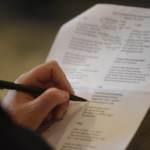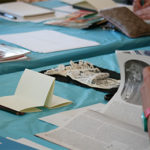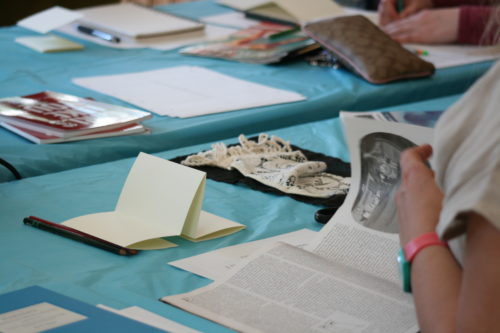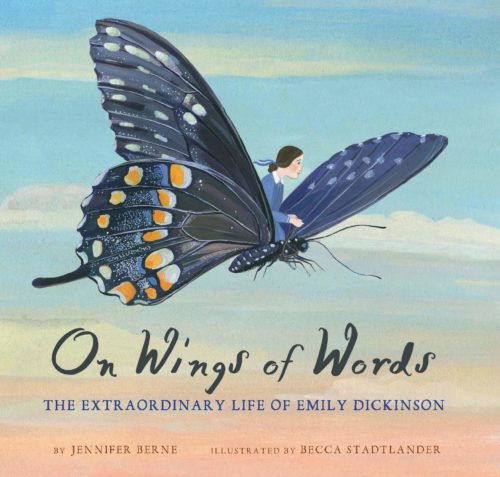
The program will be offered remotely! Stay tuned for more information on how to participate.
Celebrate National Poem in Your Pocket Day with the Emily Dickinson Museum. Every year during National Poetry Month we take this day to carry a favorite poem with us and share with friends near and far. During this year’s remote program we will focus on a recently published book, On Wings of Words: The Extraordinary Life of Emily Dickinson written by Jennifer Berne and illustrated by Becca Stadtlander, published by Chronicle Books in 2020. Visit IndieBound.org to purchase this book through your local bookstore!
Ways to Celebrate:
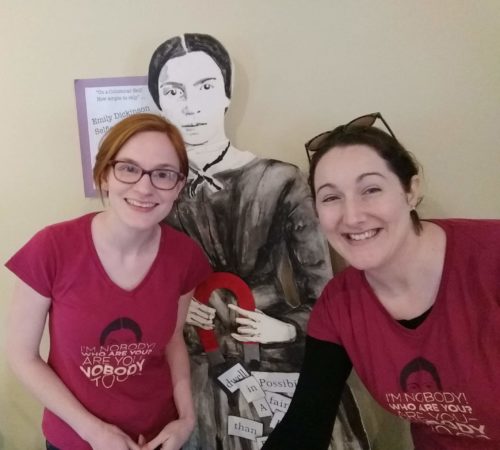
-
- Carry a favorite “Poem in Your Pocket” and share it on social media using the hashtags #pocketpoem and #EmilyDickinsonMuseum
- Mail a poem to a friend
- Chalk your walk with a favorite poem
- Join us for our virtual story hour at 11AM for a reading of On Wings of Words: The Extraordinary Life of Emily Dickinson written by Jennifer Berne and illustrated by Becca Stadtlander. At 11AM tune in to Facebook Live at the Emily Dickinson Museum Facebook page to attend this live story hour.
Celebrate Poem in Your Pocket Day with this read aloud of ‘On Wings of Words: The Extraordinary Life of Emily Dickinson’ written by Jennifer Berne and illustrated by Becca Stadtlander. After you listen to the story, visit https://www.emilydickinsonmuseum.org/poem-in-your-pocket-day-2020/ for activities inspired by this book! This story read with permission of Chronicle Kids <3
Posted by The Emily Dickinson Museum on Thursday, April 30, 2020
Activities
- Poetic Portraits
With the power of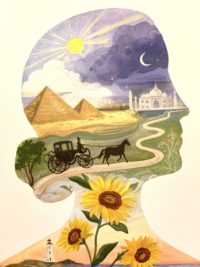 her words and the freedom of her imagination, Emily explored the universe. Inspired by an illustration in the story, this activity asks readers to imagine what they would like to experience.
her words and the freedom of her imagination, Emily explored the universe. Inspired by an illustration in the story, this activity asks readers to imagine what they would like to experience.
Directions: “Dwell in possibility” and think about all you would like to see, do, touch, or taste. Download and print one of the silhouettes below and fill it with illustrations of your ideas. You can draw or even make a collage from newspapers and magazines.



Download: child Emily silhouette Download: silhouette w/ short hair Download: silhouette w/ bun - Fun with Similes
On Wings of Words is beautifully written. The words of the story can seem like poetry because they make use of poetic devices. In this downloadable worksheet, you will practice using one poetic device called a simile.Directions: This activity as written is best for students in 8-11 who have already studied similes in school. If your student is younger or has not studied similes, skip the challenge activity. Read the sentence prompts aloud and just have fun inventing creative endings together. For example, if the comparison is “The flower was as yellow as….,” you would first read the prompt. Then, ask your child to name something yellow, write in their answer, and read the new sentence back to them.
- Wings of Words
Poets can inspire others with their words because they feel inspiration so deeply themselves. To be a poet, an artist, or a even scientist, it is important to pay attention to the things that spark your curiosity or make you feel strongly. In the book, we learn about the many sources of Emily’s inspiration, from her love of books to her brother who always made a big “hurrah” when he was near.Directions: Print out the butterfly and fill each space with a word or drawing of things that inspire you. If you don’t have a printer, draw your own butterfly.
For younger children, simplify the questions and write in their responses. Let them color in the butterfly as they wish.
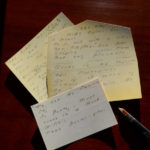
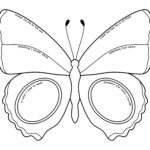
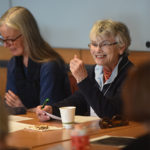
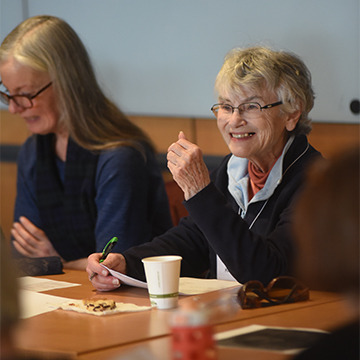
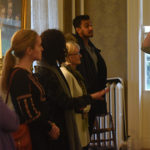
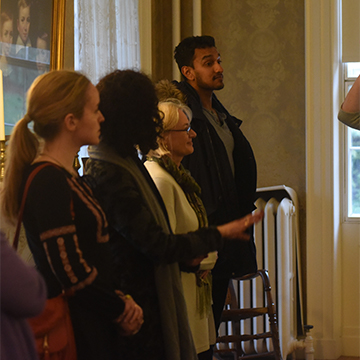 Monthly Amherst Arts Night Plus at the Emily Dickinson Museum celebrates contemporary art and poetry in our historic setting. From 5:00 – 8:00 p.m., view the pop-up, contemporary art exhibition in the Homestead by our monthly featured artist. Poets, writers, and performers of any kind are welcome to share work at our open mic, which begins at 6:00 p.m. Stay after the open mic for the featured reader of the month. Open mic sign-ups are between 5:00 and 6:00 p.m. This program is free and open to the public.
Monthly Amherst Arts Night Plus at the Emily Dickinson Museum celebrates contemporary art and poetry in our historic setting. From 5:00 – 8:00 p.m., view the pop-up, contemporary art exhibition in the Homestead by our monthly featured artist. Poets, writers, and performers of any kind are welcome to share work at our open mic, which begins at 6:00 p.m. Stay after the open mic for the featured reader of the month. Open mic sign-ups are between 5:00 and 6:00 p.m. This program is free and open to the public.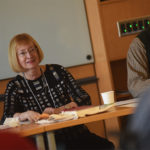
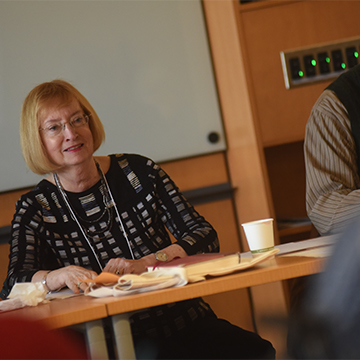 The Emily Dickinson Museum’s Poetry Discussion Group meets monthly, September through May, for lively conversation about Emily Dickinson’s poetry and letters. The Poetry Discussion Group meets at the Center for Humanistic Inquiry, on the second floor of Amherst College’s Frost Library. Participants should proceed directly to the Library and do not need to stop at the Museum. While no RSVP is required, participants are invited to email
The Emily Dickinson Museum’s Poetry Discussion Group meets monthly, September through May, for lively conversation about Emily Dickinson’s poetry and letters. The Poetry Discussion Group meets at the Center for Humanistic Inquiry, on the second floor of Amherst College’s Frost Library. Participants should proceed directly to the Library and do not need to stop at the Museum. While no RSVP is required, participants are invited to email 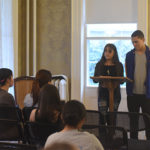
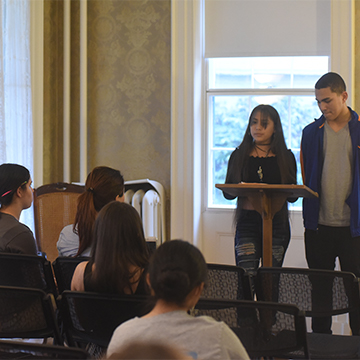 Monthly Amherst Arts Night Plus at the Emily Dickinson Museum celebrates contemporary art and poetry in our historic setting. From 5:00 – 8:00 p.m., view the pop-up, contemporary art exhibition in the Homestead by our monthly featured artist. Poets, writers, and performers of any kind are welcome to share work at our open mic, which begins at 6:00 p.m. Stay after the open mic for the featured reader of the month. Open mic sign-ups are between 5:00 and 6:00 p.m.. This program is free and open to the public.
Monthly Amherst Arts Night Plus at the Emily Dickinson Museum celebrates contemporary art and poetry in our historic setting. From 5:00 – 8:00 p.m., view the pop-up, contemporary art exhibition in the Homestead by our monthly featured artist. Poets, writers, and performers of any kind are welcome to share work at our open mic, which begins at 6:00 p.m. Stay after the open mic for the featured reader of the month. Open mic sign-ups are between 5:00 and 6:00 p.m.. This program is free and open to the public.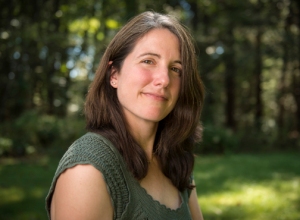
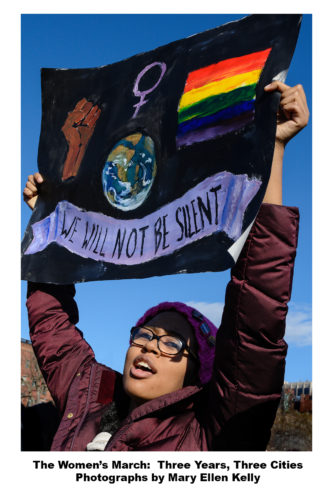
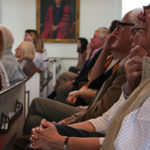
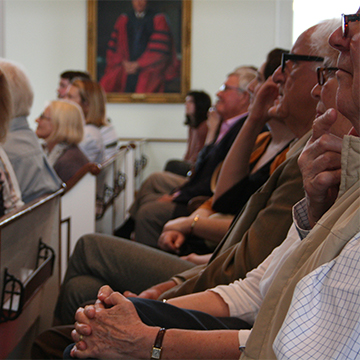 From February 27 through March 1,
From February 27 through March 1, 